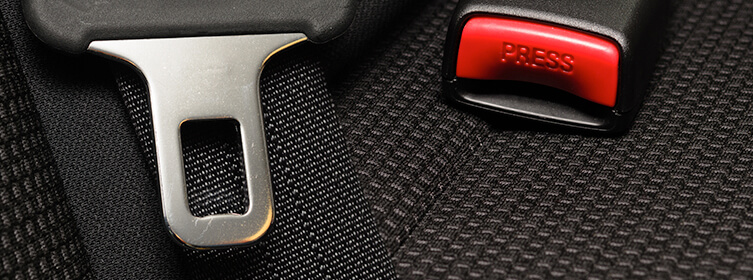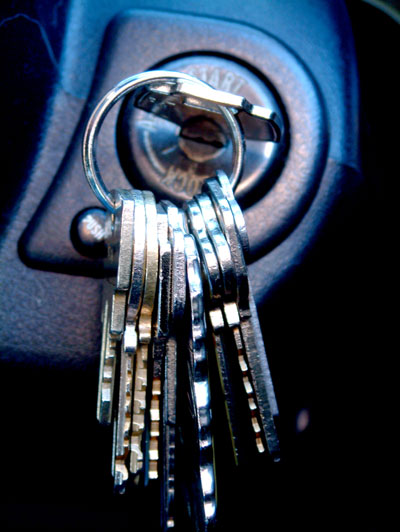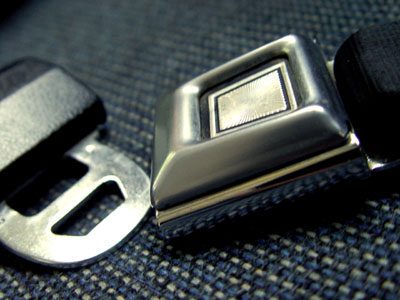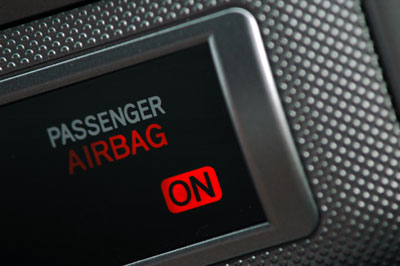Florida Vehicle Defect Lawyers

We all know that accidents can and do happen unexpectedly, even to the most careful drivers. But at Searcy Denney, we ask this question: Is it really an accident when automobile manufacturers negligently disregard your safety by hiding known defects and continuing to make and sell defective cars, vans, and SUVs? We believe the answer is no. And we do not hesitate to hold these big corporations accountable for deaths and injuries to our clients and their families. It should come as no surprise to anyone that, in today’s world, profits trump safety considerations in vehicle design. You would think that, in addition to their moral obligation to make safe cars, it would be good business for auto manufacturers to make the safest vehicles possible. Too often they don’t. Some automobile companies calculate that the potential cost of lawsuits, if they get caught, is less than the cost of designing safe vehicles, and less than the profits they make by continuing to make and sell vehicles they know are defective. A very early case in point is the now infamous Ford Pinto, which, because the gas tank was positioned too high, often exploded on impact in a rear-end collision. Despite rising incidents of explosion, which often resulted in death or horrible injuries to drivers and passengers, Ford stonewalled. The company decided that the cost of retooling its production line would be far more expensive than “paying” innocent victims of the Pinto’s defective design. The result was unprecedented tragedy and lawsuits of historic proportion. Two recent examples of automakers withholding information about a potentially life-threatening vehicle defect are Toyota’s knowledge of design flaws that caused gas pedals to become stuck, and the ignition switch problems that forced General Motors to recall 2.6 million cars in early 2014 – more than a decade after it found out about the problem. (Ironically, GM employees have admitted to investigators that replacement parts for the defective switches would have cost the company only 57 cents each.)
PRODUCT LIABILITY LAWYERS HANDLING AUTO DEFECT CASES FOR 45 YEARS
Here are just two examples of our product liability attorneys’ experience representing clients and families of victims of defective vehicles:
- Safely belted in her Ford Explorer, a Deerfield Beach woman was rear-ended and the Explorer’s seat-reclining mechanism failed, collapsing onto the rear seat. The woman was thrown backwards and suffered permanent damage to her spine, requiring 24-hour nursing care the rest of her life. A jury found Ford Motor Company and a Delray Beach Ford dealership liable for selling a defective vehicle, and awarded the woman $10.4 million.
- A 17-year-old high school senior, also wearing his seat belt, swerved his Chevrolet Suburban to avoid another car, and his SUV rolled over. The roof section above his head crashed downward, striking his head and causing serious skull fractures and massive brain swelling. Despite the high-powered defense firms retained by General Motors, Searcy Denney attorneys Chris Searcy and Darryl Lewis were able to negotiate a substantial confidential settlement based on discovery that General Motors had long known about the roof crush defect.
Unfortunately, some automakers continue to put their profit before your safety, and millions of defective vehicles are still on the road – accidents waiting to happen. That’s why the attorneys at Searcy Denney Scarola Barnhart & Shipley are ready to help you sort out your rights. We are not afraid to take your case to trial, going toe-to-toe with auto manufacturers’ corporate attorneys.
IN MANY CASES, AUTOMAKERS KNOW THAT THEIR CARS ARE UNSAFE
The National Highway Traffic Safety Administration (NHTSA) defines a safety-related vehicle defect as a problem in a vehicle, or its equipment, that “poses a risk to motor vehicle safety, and may exist in a group of vehicles of the same design or manufacture, or items of equipment of the same type and manufacture.” Since 1966, when a precursor agency to NHTSA was given the authority to require recalls of vehicles that do not meet Federal safety standards, the recall numbers are staggering: More than 500 million cars, trucks, buses and other vehicles in 17,000 recalls. Perhaps the most shocking example of manufacturers’ marketing vehicle products with known defects is that of Takata, a Japanese firm whose exploding airbags resulted in the largest recall in the world: more than 70 million airbags in the U.S. and 100 million worldwide. Vehicles affected include models from 14 manufacturers, big names such as Honda, Toyota, Ford, Mazda, BMW and Audi. To date, there have been 11 deaths and 150 injuries – but there will be more. That’s because, as of September 2016, only eight million of these recalled vehicles had been fitted with new, safer airbags. Investigations into causes of Takata’s defective airbags show that, after exposure to moisture and high temperatures, the chemical ammonium nitrate in air bag inflators can cause the inflators to burst and throw off metal shards. But ongoing research indicates that other elements – rust, bad welds, even chewing gum – may contribute to the problem. Honda has admitted that it asked Takata in 2009 for a redesign of its product, after learning that airbag deployment had produced an explosion of metal shards that killed one person and injured four more. Yet, in violation of federal law, Honda did not notify the NHTSA. By late 2016, Takata had been fined $70 million for failing to issue an alert, and the U.S. Department of Justice was in discussion with the company about alleged criminal wrongdoing. In an earlier move to expose withholding of critical information that could prevent fatalities and injuries, the NHTSA launched a probe into Big Automaker Toyota’s “sudden” recall of more than 8 million vehicles based on incidents of unintended acceleration and drivers’ inability to control the gas pedal. After a 10-month investigation, in February 2011 the agency concluded that the recalled models had no electronic defects, but did have two serious design defects: “sticking” gas pedals and a design flaw that enabled gas pedals to become stuck under floor mats. Most important, Toyota’s records indicate that the company knew about these defects; the company paid a $33 million civil penalty for not notifying NHTSA of the problem. Yet Toyota did nothing about the defects until crash incidents were reported and national media picked up the story. In early 2014, Toyota was fined $1.2 billion for failing to reveal or correct these design defects. Beyond the widespread vehicle defects that create headlines, there are other possible defects that consumers should be aware of. Here are just a few examples:
- Vehicle parts, such as a roof that fail crashworthiness tests;
- Steering elements that cause the vehicle to lose control;
- Fuel system components that leak and can cause fires;
- Accelerator controls that break or stick;
- Cracked wheels that cause loss of control;
- Windshield wipers that don’t operate correctly;
- Seats and seat backs that fail;
- Faulty wiring systems that can catch fire;
- Air bags that deploy unexpectedly;
- Child safety seat components, such as buckles, which create injury risks.
If a loved one has been killed or you have been injured because of any one of these vehicle defects, the product liability lawyers at Searcy Denney have more than 45 years’ experience handling these kinds of cases. For us, no case is too complex . . . and every case matters.
DEFECTS IN MOTORCYCLES AND ALL-TERRAIN VEHICLES ALSO CAN BE LETHAL
When we read the news about safety defects that cause so many deaths and injuries in passenger cars, SUVs, and trucks, sometimes we forget about the dangers posed by defects in smaller vehicles such as motorcycles and ATVs. By September 30, 2016, the NHTSA had already recalled 42 motorcycles and scooters from popular brand companies such as Harley Davidson, Suzuki, Yamaha, and Kawasaki. In one earlier but notable recall, American Suzuki Motor Corporation recalled its 2005 and 2006 GSX-R1000 sport bikes because frames were cracking and breaking behind and below the steering neck. In some instances, this frame defect caused front steering assemblies to separate completely from the body of the bike. Forced to retrofit or replace broken frames, Suzuki nonetheless tried to blame riders! The Consumer Product Safety Commission and the National Highway Traffic Safety Administration both maintain databases of recalls of all-terrain vehicles (ATVs) that threaten riders’ safety. The causes of recalls range from fire hazards such as improperly vented fuel tanks to steering issues, brake problems, and parts that deteriorate or break in very high or very low temperatures. Aware of increasing deaths and injuries due to ATVs, Yamaha cleverly called its Rhino® a “utility terrain vehicle” instead. The new name helped sidestep federal safety regulations and camouflage potential hazards of high profile design, narrow wheel base, too-narrow tires, high center of gravity, absence of doors or side guards, and too much steering range. Ultimately, six different Rhino® models were subjected to warnings and retrofits – too little, too late for the more than 30 people who died and hundreds more who sustained serious injuries.
A NEW CHALLENGE: PREVENTING SAFETY DEFECTS IN SELF-DRIVING CARS
In September 2016, the U.S. Department of Transportation (DOT) released the first checklist for semiautonomous and driverless cars, putting manufacturers and tech companies on notice that their products must meet safety standards. On the Department’s 15 point checklist of expectations are strict guidelines for design and engineering to prevent defects that cause accidents and take lives. DOT’s Vehicle Performance Guidance for Automated Vehicles outlines “best practices for the safe design, development and testing of automated vehicles” that include:
- Methods for testing, validating and verifying highly automated vehicles (HAVs). Testing should include, for example, test track and on-road studies.
- A process for switching vehicles safely between autopilot and human control, including restoring automation functions after a crash.
- Engineering of safety practices to support “reasonable system safety,” such as responses to software malfunctions, loss of traction, and near crashes.
- Crashworthiness – that is, crash protection that meets NHTSA’s existing standards for all automobiles.
Self-driving cars have drawn applause from many safety-conscious Americans who understand that in most vehicle accidents, human error is the culprit. But, as for any new product, making driverless cars defect free and fail-safe will likely be a trial and error process for many years.
CALL OR CONTACT A FLORIDA PRODUCT LIABILITY LAWYER ONLINE
If you or someone you love has suffered an injury because of a vehicle defect, please get in touch with us right away by completing our Contact Form online or calling us at 1-855-685-1843. We will be happy to schedule a free confidential consultation with one of our experienced Florida product liability lawyers.





